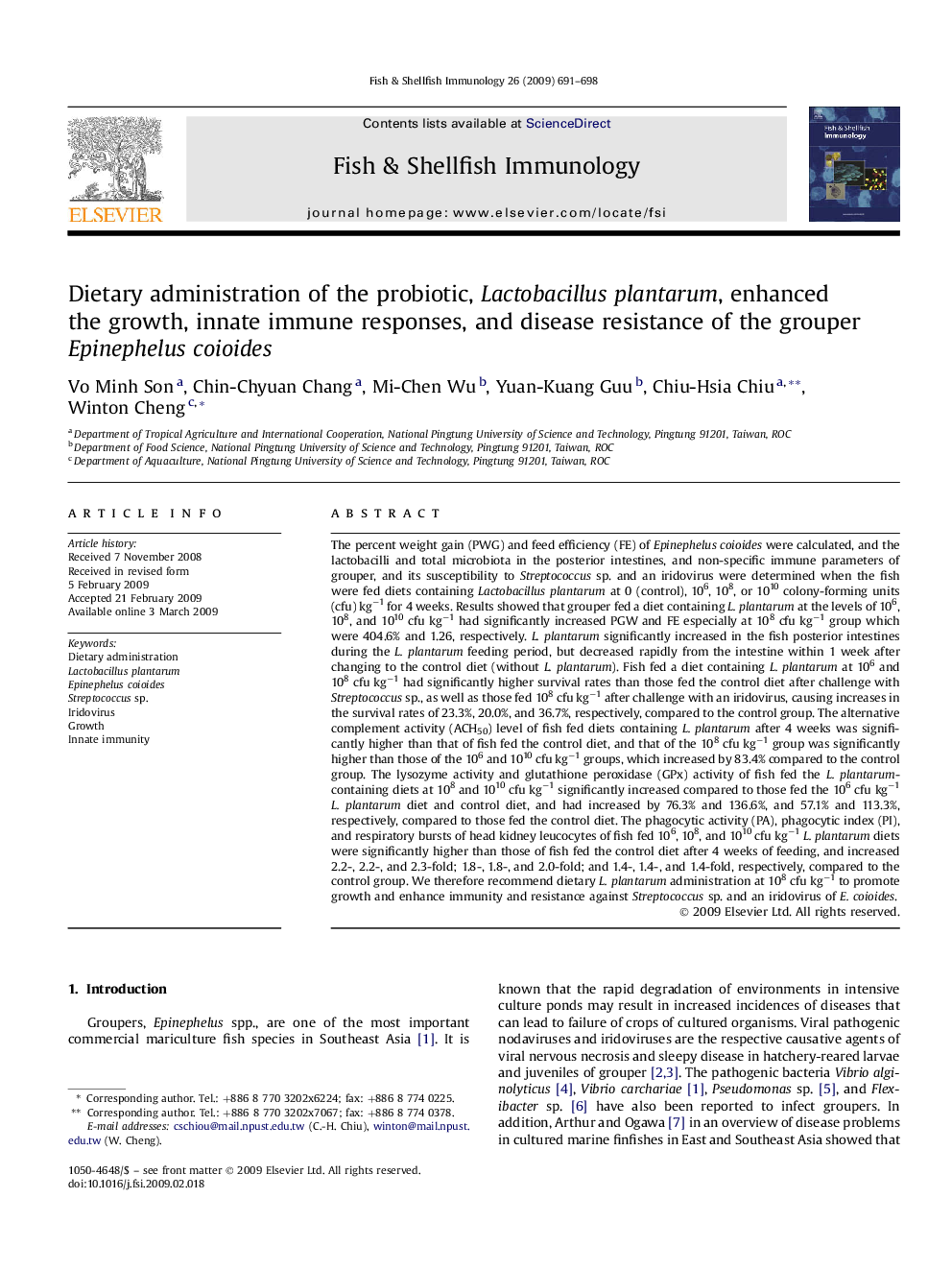| کد مقاله | کد نشریه | سال انتشار | مقاله انگلیسی | نسخه تمام متن |
|---|---|---|---|---|
| 2433026 | 1106815 | 2009 | 8 صفحه PDF | دانلود رایگان |

The percent weight gain (PWG) and feed efficiency (FE) of Epinephelus coioides were calculated, and the lactobacilli and total microbiota in the posterior intestines, and non-specific immune parameters of grouper, and its susceptibility to Streptococcus sp. and an iridovirus were determined when the fish were fed diets containing Lactobacillus plantarum at 0 (control), 106, 108, or 1010 colony-forming units (cfu) kg−1 for 4 weeks. Results showed that grouper fed a diet containing L. plantarum at the levels of 106, 108, and 1010 cfu kg−1 had significantly increased PGW and FE especially at 108 cfu kg−1 group which were 404.6% and 1.26, respectively. L. plantarum significantly increased in the fish posterior intestines during the L. plantarum feeding period, but decreased rapidly from the intestine within 1 week after changing to the control diet (without L. plantarum). Fish fed a diet containing L. plantarum at 106 and 108 cfu kg−1 had significantly higher survival rates than those fed the control diet after challenge with Streptococcus sp., as well as those fed 108 cfu kg−1 after challenge with an iridovirus, causing increases in the survival rates of 23.3%, 20.0%, and 36.7%, respectively, compared to the control group. The alternative complement activity (ACH50) level of fish fed diets containing L. plantarum after 4 weeks was significantly higher than that of fish fed the control diet, and that of the 108 cfu kg−1 group was significantly higher than those of the 106 and 1010 cfu kg−1 groups, which increased by 83.4% compared to the control group. The lysozyme activity and glutathione peroxidase (GPx) activity of fish fed the L. plantarum-containing diets at 108 and 1010 cfu kg−1 significantly increased compared to those fed the 106 cfu kg−1L. plantarum diet and control diet, and had increased by 76.3% and 136.6%, and 57.1% and 113.3%, respectively, compared to those fed the control diet. The phagocytic activity (PA), phagocytic index (PI), and respiratory bursts of head kidney leucocytes of fish fed 106, 108, and 1010 cfu kg−1L. plantarum diets were significantly higher than those of fish fed the control diet after 4 weeks of feeding, and increased 2.2-, 2.2-, and 2.3-fold; 1.8-, 1.8-, and 2.0-fold; and 1.4-, 1.4-, and 1.4-fold, respectively, compared to the control group. We therefore recommend dietary L. plantarum administration at 108 cfu kg−1 to promote growth and enhance immunity and resistance against Streptococcus sp. and an iridovirus of E. coioides.
Journal: Fish & Shellfish Immunology - Volume 26, Issue 5, May 2009, Pages 691–698